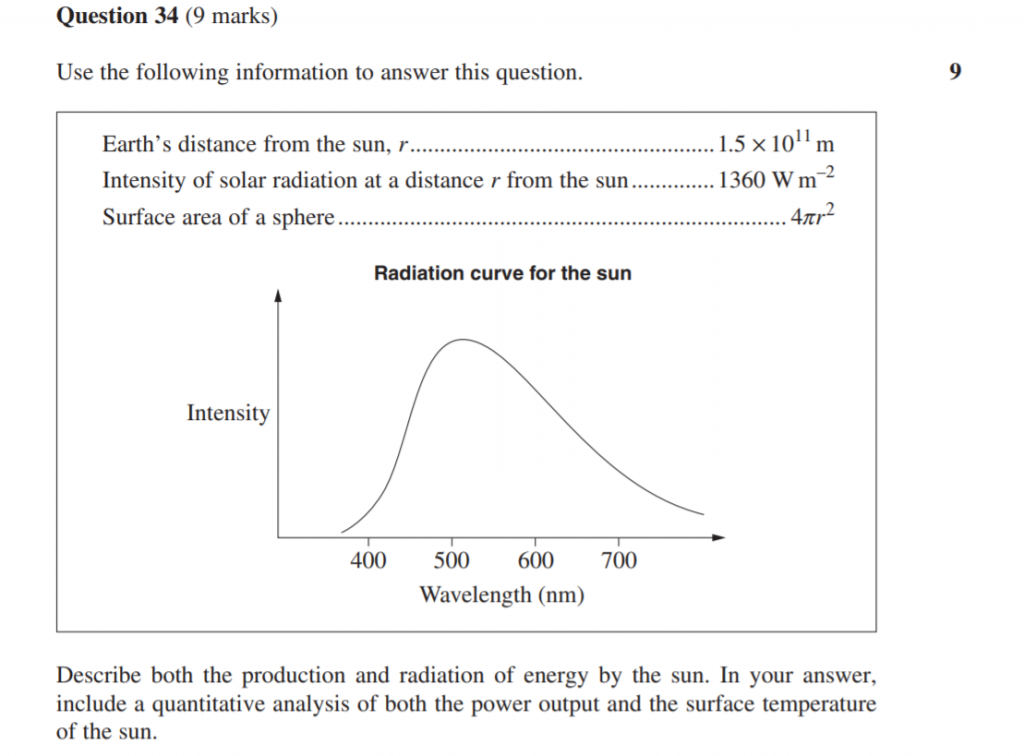Have an HSC Physics exam coming up but have no idea what order to attack it in?
We’ve identified each section of the exam you’ll be required to undertake and listed the pros and cons of starting with each!
So, what are you waiting for? Dive right in!
HSC Physics Exam Layout
Identifying the Pros and Cons of Each Type of Question
Identifying your Personal Weak Points before the HSC Physics Exam
HSC Physics Exam Layout
There are two sections to the HSC Physics Exam.
There’s Section I which consists of 20 multiple choice questions and then Section II which consists of short answer and extended response questions, which may include graphing.
You can check out the HSC Physics Exam from 2019 here to have a look at the structure!
So our different types of questions are as follows:
- Multiple Choice (1 mark)
- Short Response (2, 3, 4 or 5 marks)
- Extended Response (6, 7, 8 or 9 marks)
- Drawing or Graph
Identifying the Pros and Cons of Each Type of Question
The Multiple Choice
This style of question is testing straight fact recollection. One of the options will be objectively true, while the others are all objectively false!
This is why it’s sometimes called the objective response section.
Here’s what a multiple choice question looked like from the 2019 HSC Physics Exam:
- Pros: If you know your facts, you’ll blitz this section in no time.
- Cons: Since you have the options in front of you, it’s hard to give up and move on. So one can tend to waste a lot of time on the multiple choice without even realising it!
The Short Response
This style of question once again is testing straight fact recollection, the only difference being you don’t have an option to choose from, you actually have to remember the fact yourself!
Here’s an example of a short answer response question from the 2019 HSC Physics Exam:
- Pros: Usually quick, just need to write down the fact they’re looking for.
- Cons: Incredibly diverse, questions can come from the entire course, and will usually jump back and forth in the syllabus arbitrarily. The HSC Physics paper is not ordered by module!
The Extended Response
The extended response style questions are more substantial. They’re asking for your considered opinion, you’ll need to pull together information from multiple places, and make a judgement.
Here’s what an extended response question looked like from the 2019 HSC Physics Exam:
- Pros: If you’ve read our mastering the syllabus article, and know the links between the various syllabus dot points, you shouldn’t find this too bad! We also have some articles on what the HSC markers are looking for in these questions here, as well as articles on how to write the perfect response here
- Cons: If you don’t have the links cemented in your mind, synthesising a good response can be daunting
The Drawing or Graph
Finally we have questions requesting a drawing from you, or a graph. This type of question is potentially most hazardous.
The drawing question is usually not a direct quoting of the syllabus it requires you to extrapolate your knowledge to a case you haven’t covered specifically in class, and make a decision as to what might happen.
Here’s an example of a graphing question from the 2019 HSC Physics Exam:
- Pros: Drawing in the middle of the exam can be a bit relaxing, if you have an understanding of HSC Physics, you shouldn’t find this challenging.
- Cons: Requires some thinking, this style of question cannot be defeated by ROTE
Identifying your Personal Weak Points before the HSC Physics Exam
If you’re completely screwed and haven’t really memorised enough content, then I’ll be honest, the order you do the paper probably won’t make a difference.
The best thing you can do is study, and then study some more! However if your weaknesses are very specific, then there is some advice I can offer you!
I found the first few topics easy, but then it just got harder and harder…
Let’s say you were on track at the start of the year, and then feel you fell off the wagon as the year progressed.
Then your decision is probably the easiest! Just do the paper in the traditional order.
The multiple choice will give you a quick refresher across the modules. Then you can gradually build up towards the harder questions in the extended response questions!
If you feel the content got harder as the year went on, go for the traditional order
I get super stressed in the exam
If you find yourself losing your cool in the exam, the best thing you can do is tailor the exam for you!
In the reading time, identify all the questions you’re confident with, and do those first!
If you like the extended response question, don’t leave it just do it straight away! This way you’ll have completed all the easy questions.
If we leave the difficult questions until the very end, they wont affect us. The worst thing you can do is start off with a question you’re not happy with and let that stress propagate through the exam. I found the graphing questions were great for relieving my stress.
If you feel stressed, Identify your strengths and weakness based on the pros and cons of each section. Tackle the paper from your strongest areas to your weakest.
I run short on time
If you’re the type of person who’s running short of time in the exam, it’s probably in the longer response and drawings.
Begin your paper with the short response, yes that includes the core and option! Once you’ve completed all the short response, smash through as many of the long responses as you can. If you feel yourself stalling, just highlight the question and move on!
Once you’re done with the extended response, you’ll begin the graphs and drawings.
Just keep working on the extended responses and drawings until you’re done or you have half an hour to spare.
As soon as you’re in the last half hour, it’s time to stop and tackle the multiple choice. This is probably your best bet for finishing on time.
If you run short of time, the best order for you is: Short response -> Extended Response -> Drawing -> Multiple Choice
Looking for some extra help with HSC Physics?
We have an incredible team of HSC Physics tutors and mentors!
We can help you master the HSC Physics syllabus and ace your upcoming HSC assessments with personalised lessons conducted one-on-one in your home or at our state of the art campus in Hornsby!
We’ve supported over 5,000 students over the last 10 years, and on average our students score mark improvements of over 19%!
To find out more and get started with an inspirational HSC English tutor and mentor, get in touch today or give us a ring on 1300 267 888!
Vamsi Srinivasan is looking to uncover the next hidden truth of the universe. He was fascinated by the beauty of Physics and Mathematics during his HSC. Now, he’s in his third year of a dual degree in Physics/Computer Science. Vamsi wanted to share his passion for Maths and Physics and has been an Art of Smart coach for the past 3 years. He coaches students in Physics as well as all ranges of HSC Maths from General to Extension 2. In his spare time you can find him watching Tennis or listening to his favourite podcast ‘Hello Internet’.







